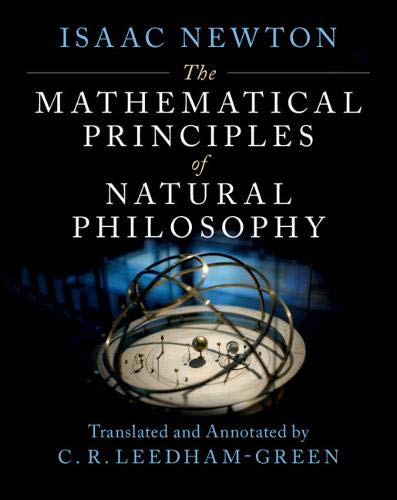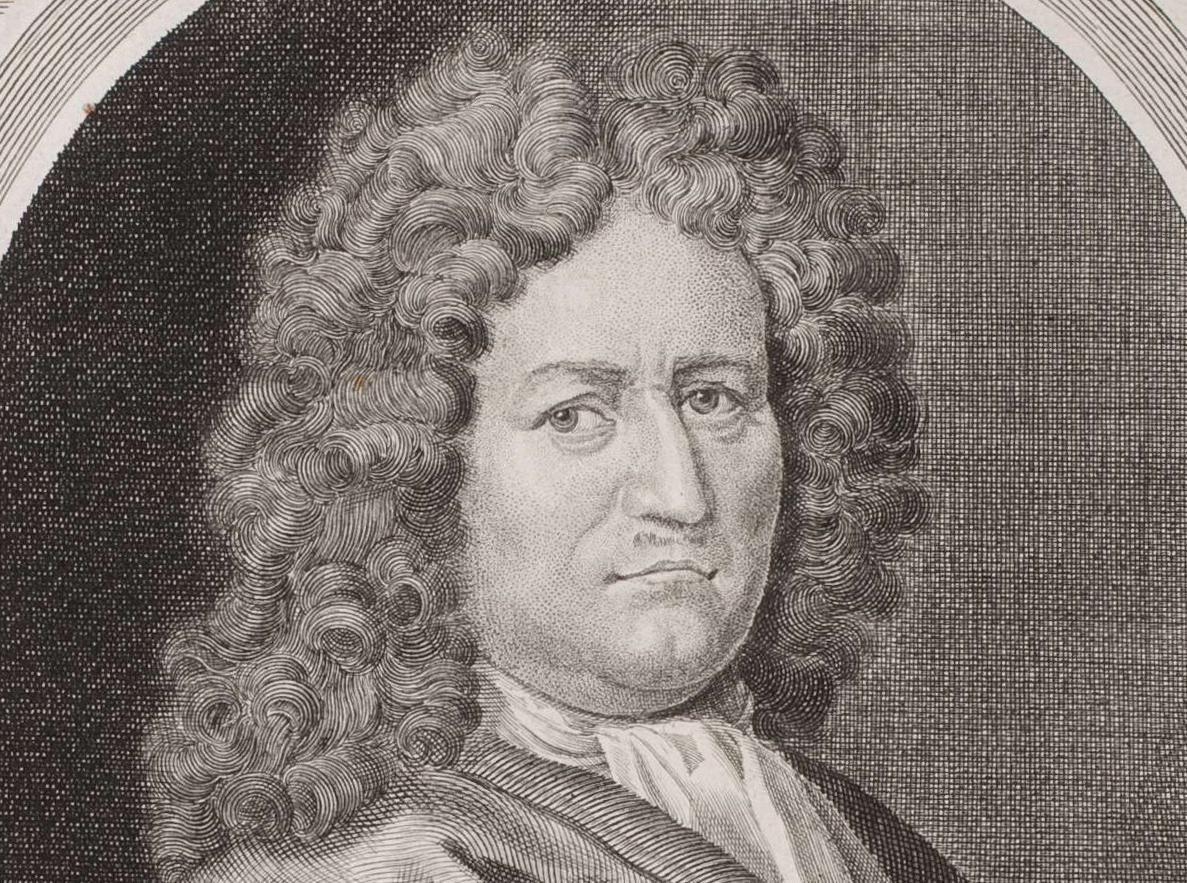Although he did not travel, Newton sat at the centre of an intellectual community that stretched from India to America, though its members were all European, and Newton noted their nationality, provided that they were English.
Gottfried Kirch (1639-1710), the son of a cobbler or tailor who came to Germany as a penniless refugee from Poland, rose to become the first Astronomer Royal in Berlin. His connection with The Principia lies in the comet of 1680, known also as ‘Newton’s comet’ and ‘Kirch’s comet’. It is the comet that Newton studied in greatest detail.
Kirch discovered the comet with a telescope; and this was the first comet to be so discovered. Kirch made other important contributions to astronomy, including the design of a micrometer. He was most famous in Germany for his calendars, and this was an important source of income, not only for himself, but for the Prussian Royal Academy, which was founded in 1700, and funded itself until 1809 by selling calendars. These calendars contained astronomical information, and could only be produced by a competent astronomer.
Maria Winckelmann (1670-1720) became Gottfried’s second wife, although 30 years his junior. They shared their observational work and the production of calendars equally, while Maria published papers in her own name. The other astronomical pair who are relevant to The Principia are Johannes and Elizabeth Hevelius, and it seems that Elizabeth helped Gottfried to realise that women could become astronomers.
In 1702, like her husband, Maria made a telescopic discovery of a comet, for which she has got little credit. This was in part due to Gottfried only admitting in 1710 that it was she who had made the discovery, and in part to the fact that the comet was also discovered two hours earlier by two Italians.
The calendars were originally produced by Gottfried and his three sisters, and then Maria joined the team. When Gottfried fell ill, she continued the work single handed. When he died, in 1710, she petitioned the Royal Berlin Academy of Sciences to be allowed to continue the work with her son Christfried, and her application was supported by Leibniz, the president of the academy, but she was refused as the other members of the academy asserted that it would have been an embarrassment for the Royal Academy to have its calendars produced by a woman.
So an inexperienced astronomer, Johann Heinrich Hoffmann, was appointed instead, to be succeeded on this death by Christfried in 1717.
In 1712 she took employment with Baron von Krosig, who had a private observatory, and she became the master Astronomer. But he died in 1714.
She and her daughters continued to work as astronomers, publishing papers. But in 1717 she was rebuked by the academy for being too prominent in public life, especially at public functions, and was removed from her residence at the Berlin observatory, and her career as an astronomer gradually faded. She died of a fever in 1720, but her two daughters, Christine and Margaretha, alongside Christfried, continued to work as professional astronomers.
Christine (1696-1782) worked into her old age, though it was not until 1740 that she was paid a regular salary. In 1773, when she was 77 years old, she was given a pension of 400 thaler. Whether this was 400 thaler a month, roughly the wages of a baker, or 400 thaler a year, I don’t know.
Little is known of Margaretha. She was born around 1703, and discovered the remarkable Great Comet C / 1743 X1 in January, 1744. But it was independently discovered by three other astronomers in 1743.
So why was there so much concern about the production of calendars?
They contained a variety of astronomical and other information, and occasionally astrological predictions. These latter items were a source of tension, as they increased the sales of the calendars, while harming their scientific status. The statements about the future movement of the moon relate to the hard core of The Principia. How Gottfried, Maria, and their relations and successors carried out these calculations I do not know.

The above illustration comes from the Improved Brandenburg Calendar for January 1 – 15, 1701. It was compiled by Gottfried and Maria, and was published by the Prussian Academy of Sciences.
The heading, in translation, starts ‘Improved January January’ in High German, Latin, and dialectical German respectively.
The next line starts with Sonnab., an abbreviation of Sonnabend, a somewhat uncommon version of the German for Saturday, regarded as the last day of the week. The next entry for this row, in translation, is 1. New Year. The next is the symbol for Libra, the constellation of the Zodiac in which the moon was to be found. The last entry gives the phase of the moon, a time 7.39 with U for Uhr (hour or time), and then Nachlass, meaning ‘residue’, which I would guess to be a statement that it is a waning moon. The time I would guess to be the time of moon rise.
The next row is the heading for the first week in January. So we have ‘1’ in the first entry, followed, in translation, by ‘Christ’s flight into Egypt, Matthew 2.’ The headings for the next week being ‘2’, and ‘Jesus aged 12 years, Luke 2’, this being the occasion when Christ’s parents lost him, to find him, three days later, in the temple; and for the third week ‘3’, and ‘The marriage at Cana, John 2.’
The entries for the seven days of each week are: the day of the week; the day of the month, as a numeral; usually a person’s name; a sign of the zodiac; and a weather forecast or astronomical observation, with a few exceptions. The second entry for Jan. 6, is ‘The three holy Kings’, this being indeed the date of Epiphany. The corresponding entry for Jan 9. indicates that this is the first Sunday after Epiphany.
The purpose of the names is to give people a name day, as a kind of extra birthday.
So if you are called Hillary, your name day is January 13, which is the feast day of St. Hilary, bishop and confessor, and hammer of the Arians.
The weather forecasts state that there will be cold spells, followed by periods when it will not be too terribly cold, and that there will be snow, frost, wind, and rain. This may seem unsurprising for January, but the Kirch’s did take records of the weather.
The last entries for Jan. 6 and 7 state that Mercury will be visible early.
The last entry for Jan. 8 starts with three astrological symbols, meaning, respectively, ‘conjunction’, ‘Saturn’ and ‘Mars’. This is followed by Unstet, meaning unsettled, and is presumably part of the weather forecast.
The last entry for Jan. 9 consists of a new moon symbol, four letters whose significance escapes me, and then ‘Frost’, which is the same in English and German.
The concluding entries give the length of the day, and the times of sunrise and sunset, for the 5th, 10th, and 15th days of the month.
Clearly the ecclesiastical information will have required no expertise to produce. But Maria knew her Bible, and could defend the Copernican view that the the sun was the centre of the solar system by reference to Holy Writ. Newton believed that the ancients held in this view, as mentioned in my previous blog.
So what are we to make of the careers of Maria, Christine, and Margaretha? Inevitably they were supported by some men, and humiliated, because of their gender, by others. Whether they had any significant effect on the slow emancipation of women is perhaps impossible to judge.
Maria and Christine, and perhaps Margaretha, were respected, and achieved a level of fame; but, as with the great majority of scientists, it was hardly an undying fame. Indeed articles on Caroline Herschel (1750-1848) generally state that she was the first professional female astronomer. There might be some discussion as to who was the first. How do you define ‘professional astronomer’? But Maria Kirch
was a professional astronomer, without any doubt, and has a reasonable claim, as far as I know, of being the first.
I commend the article ‘In remembrance of Maria Winckelmann‘ by Janice McClean, and published by the British Astronomical Association.
Charles Leedham-Green
C.R.Leedham-Green@qmul.ac.uk
Follow me on Twitter
My new translation of The Principia is published by Cambridge University Press
To get a 30% discount, visit cupbookshop.co.uk and enter the code NEWTON30 at checkout. Offer valid until 31 May 2022.

